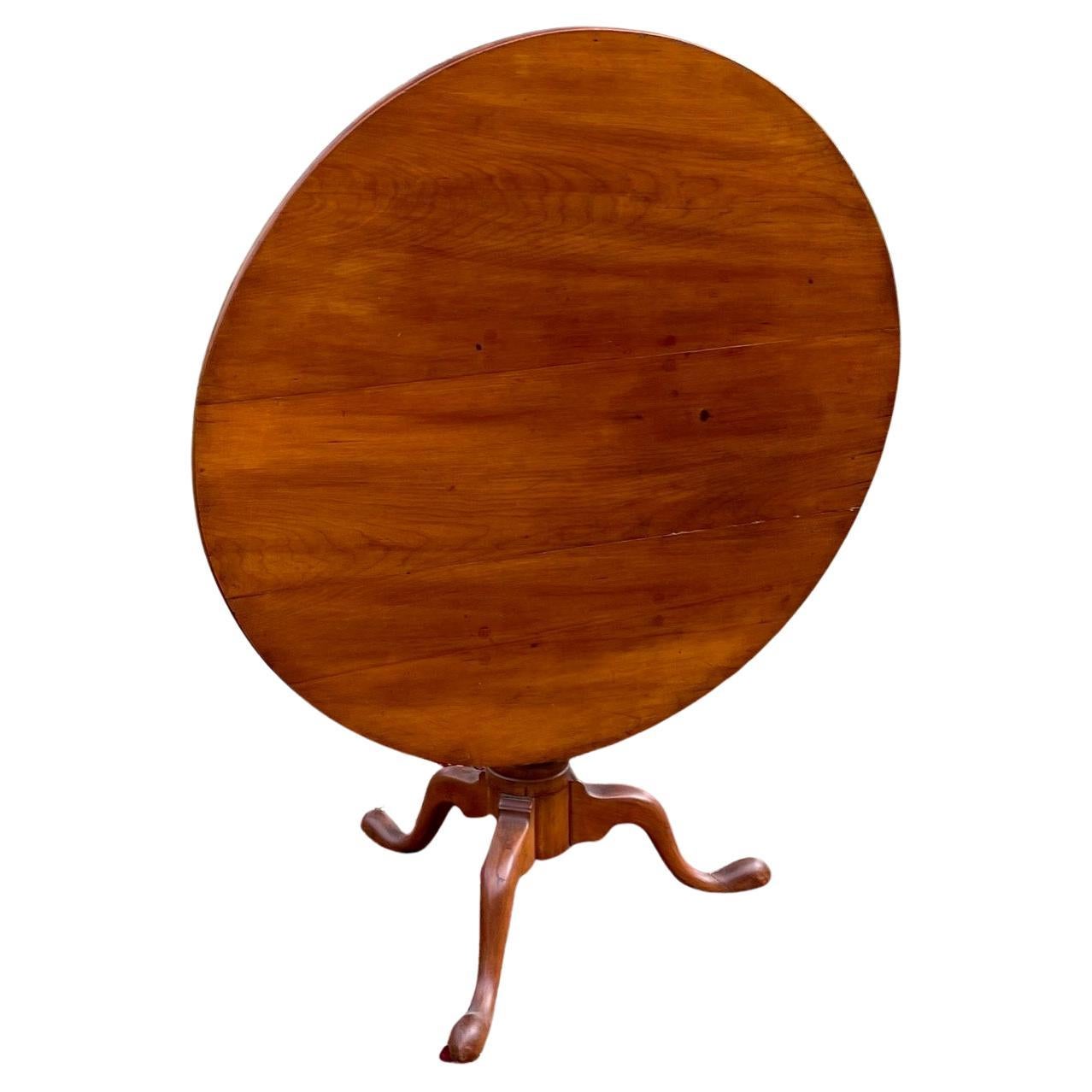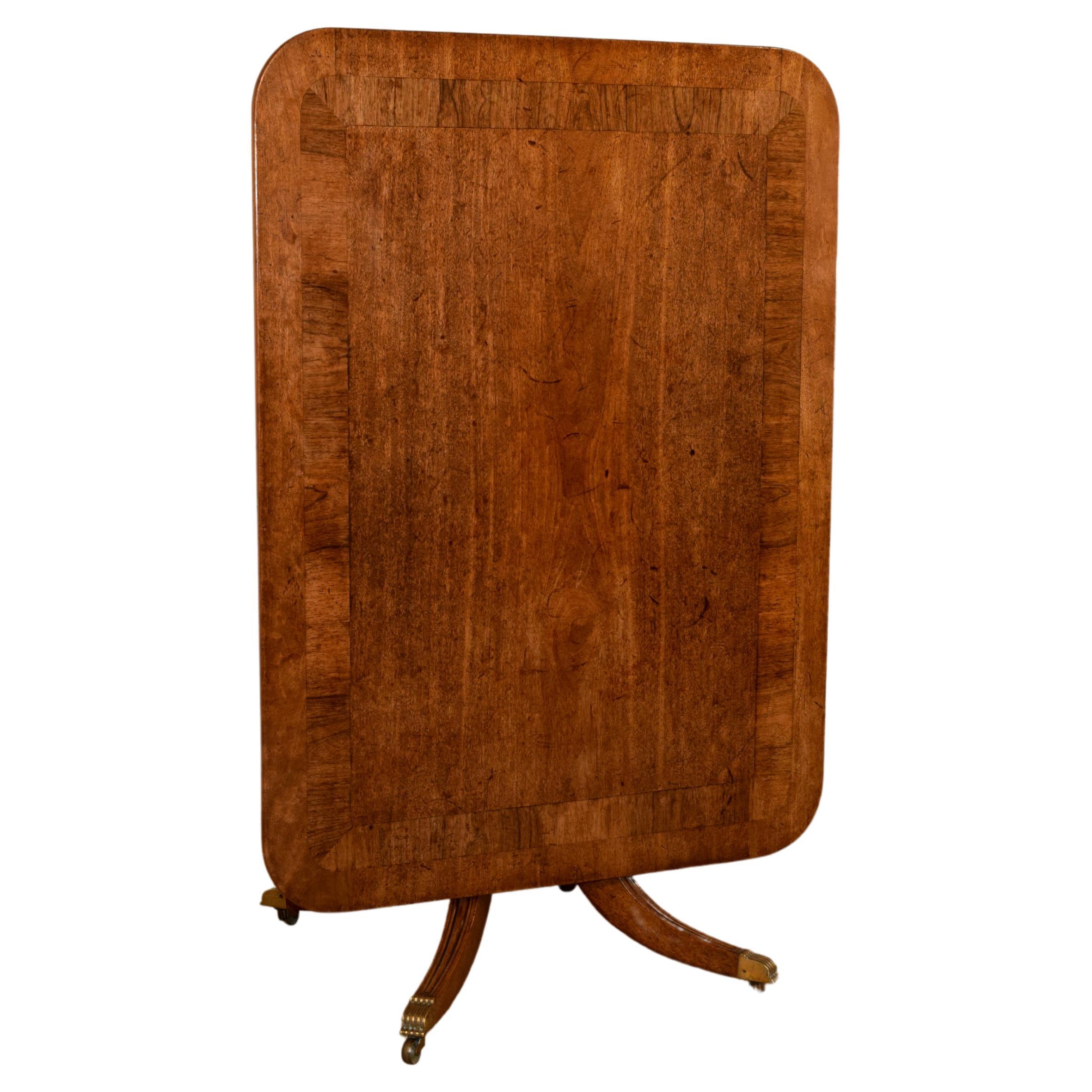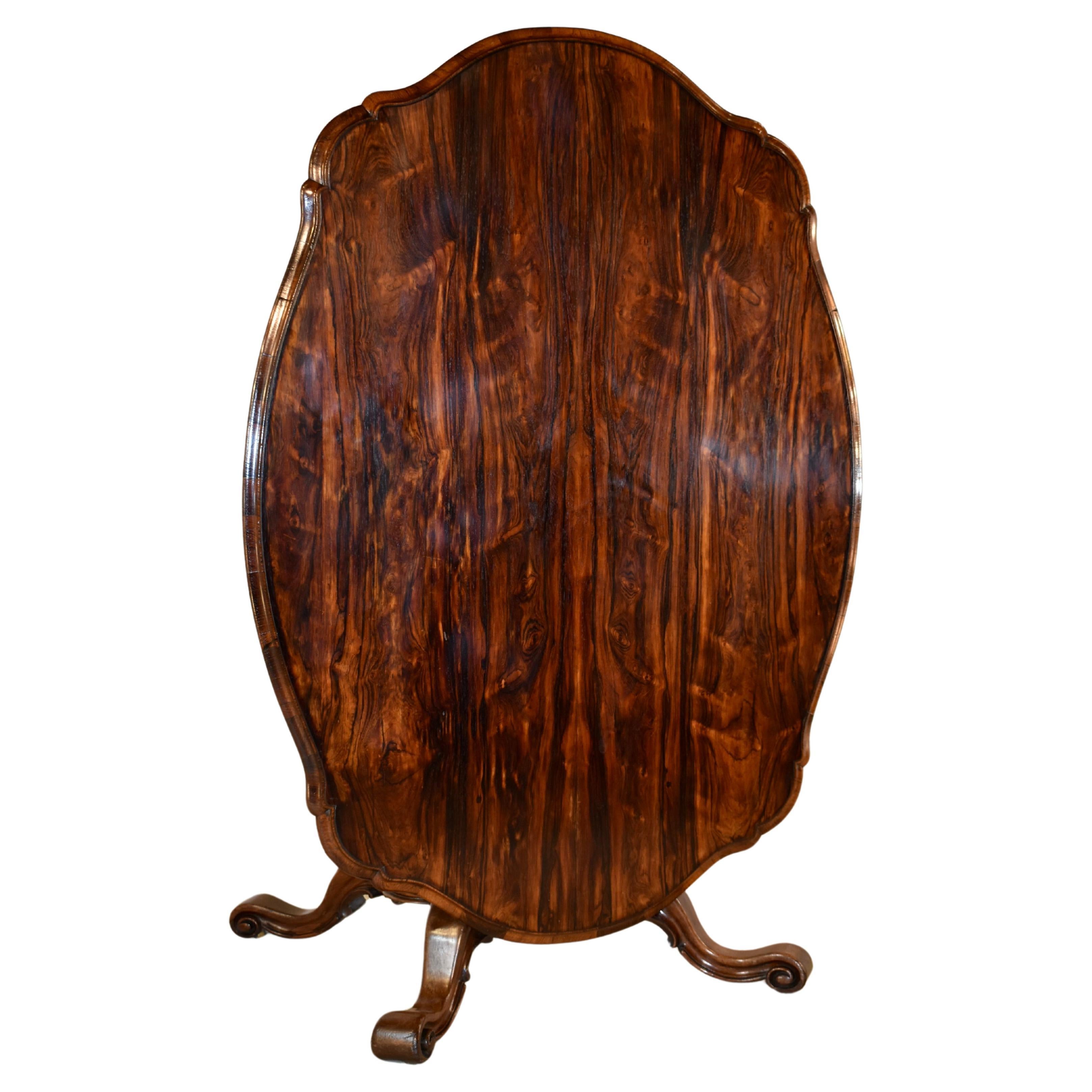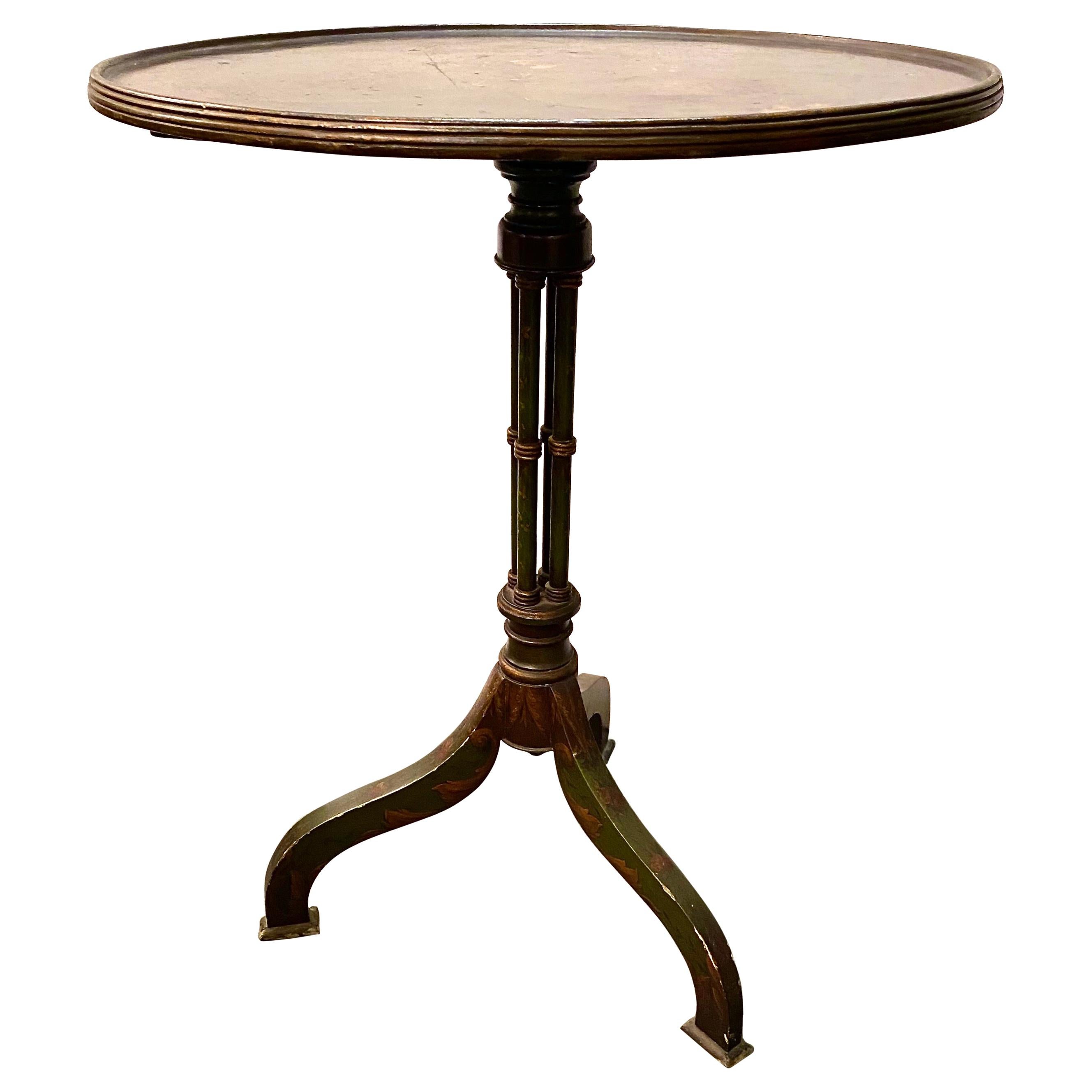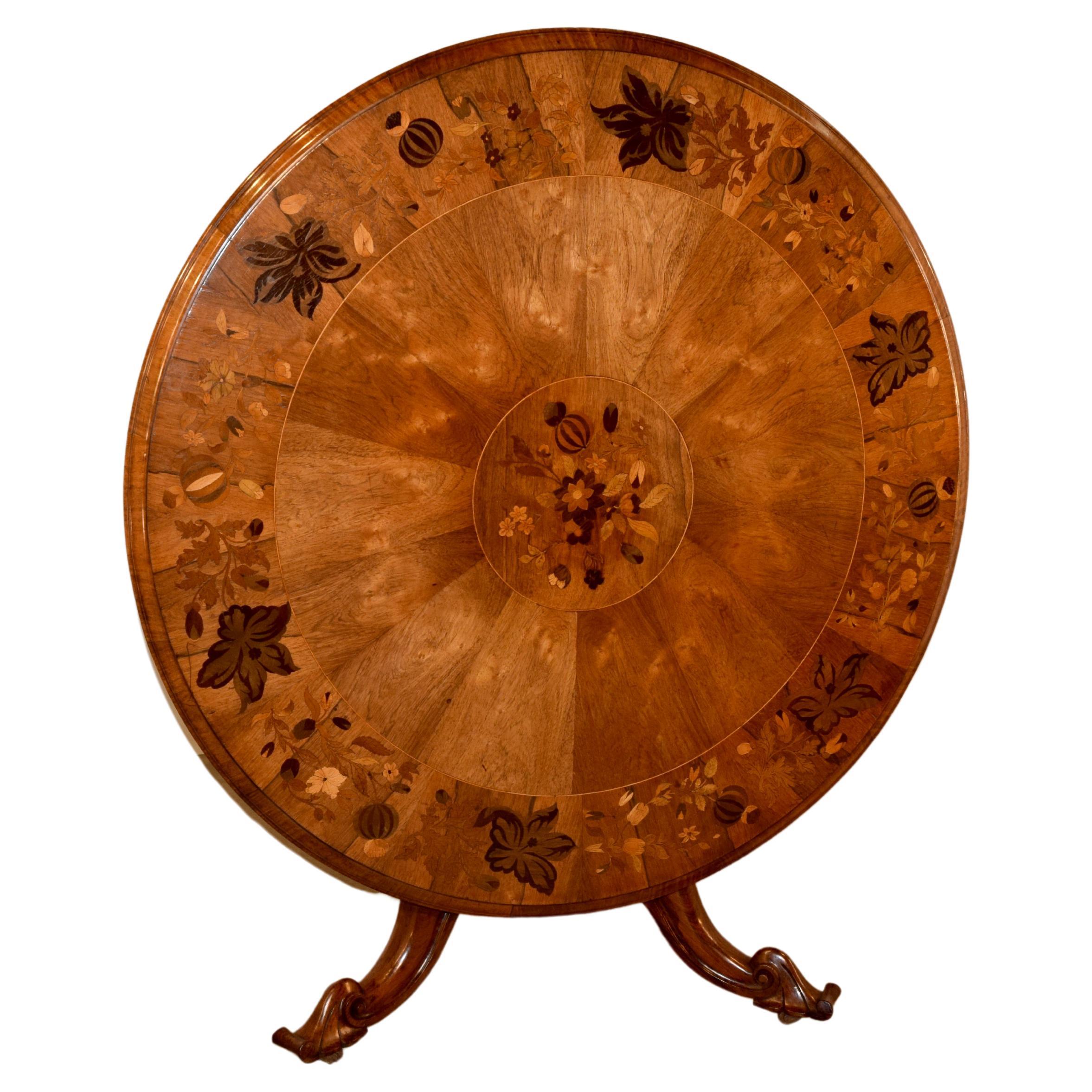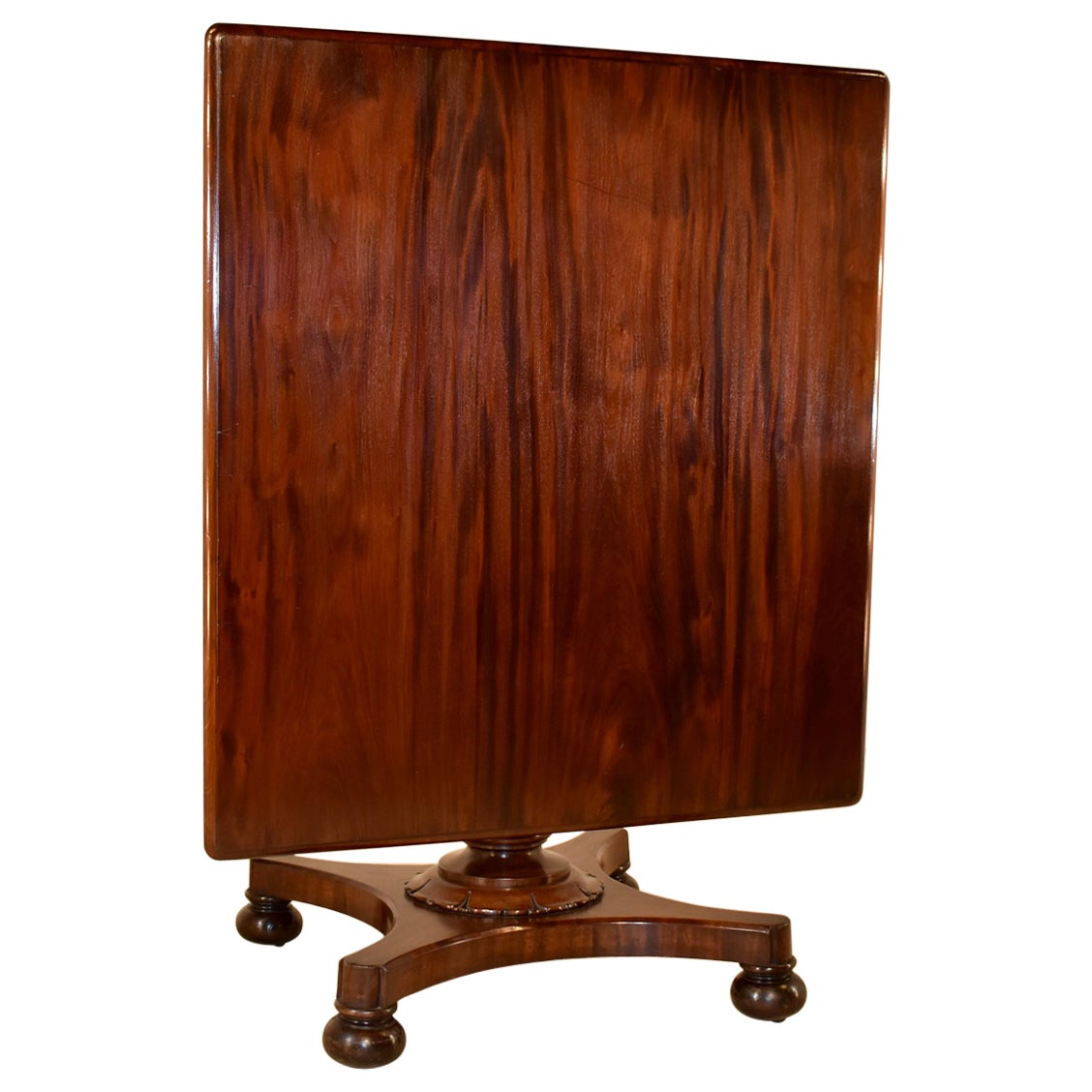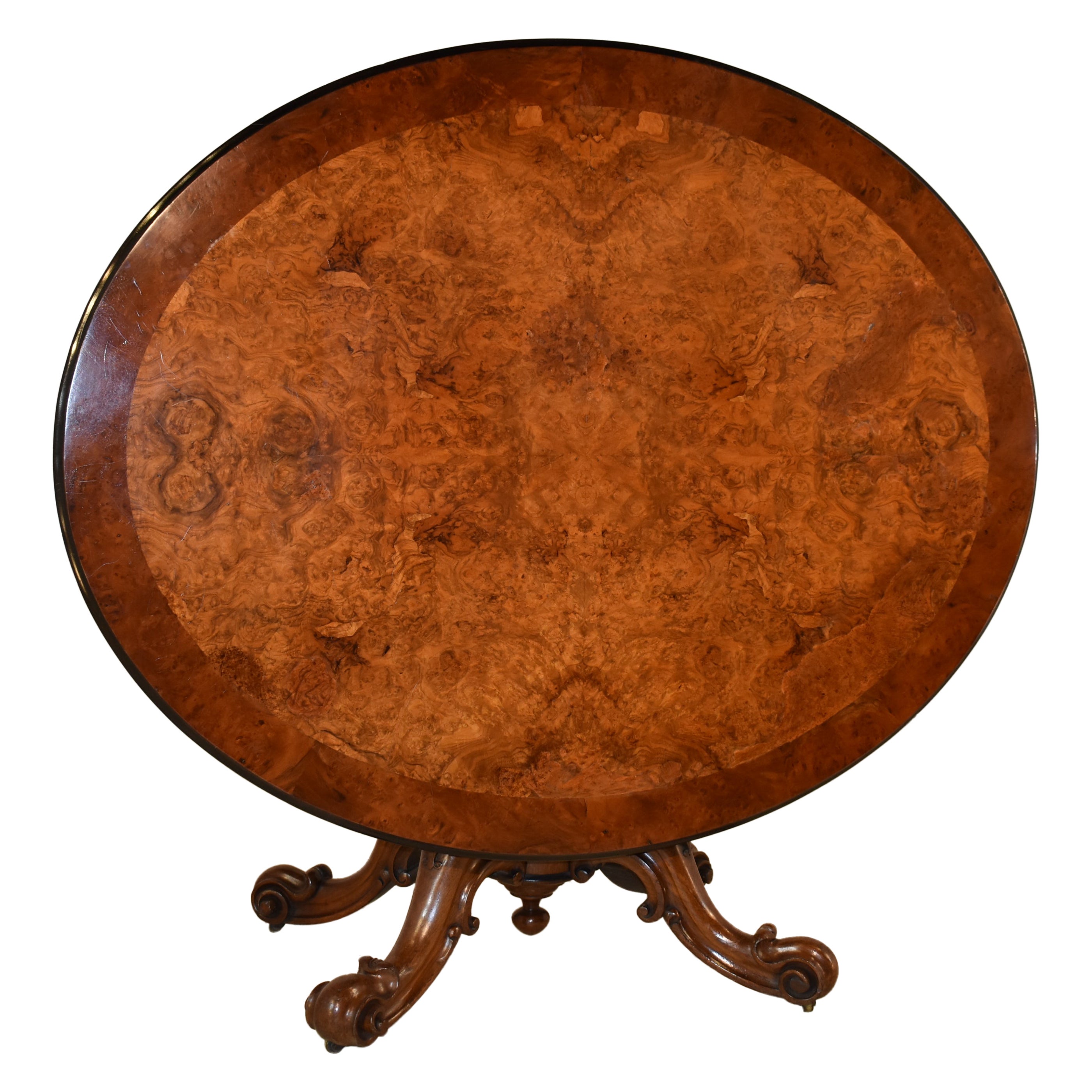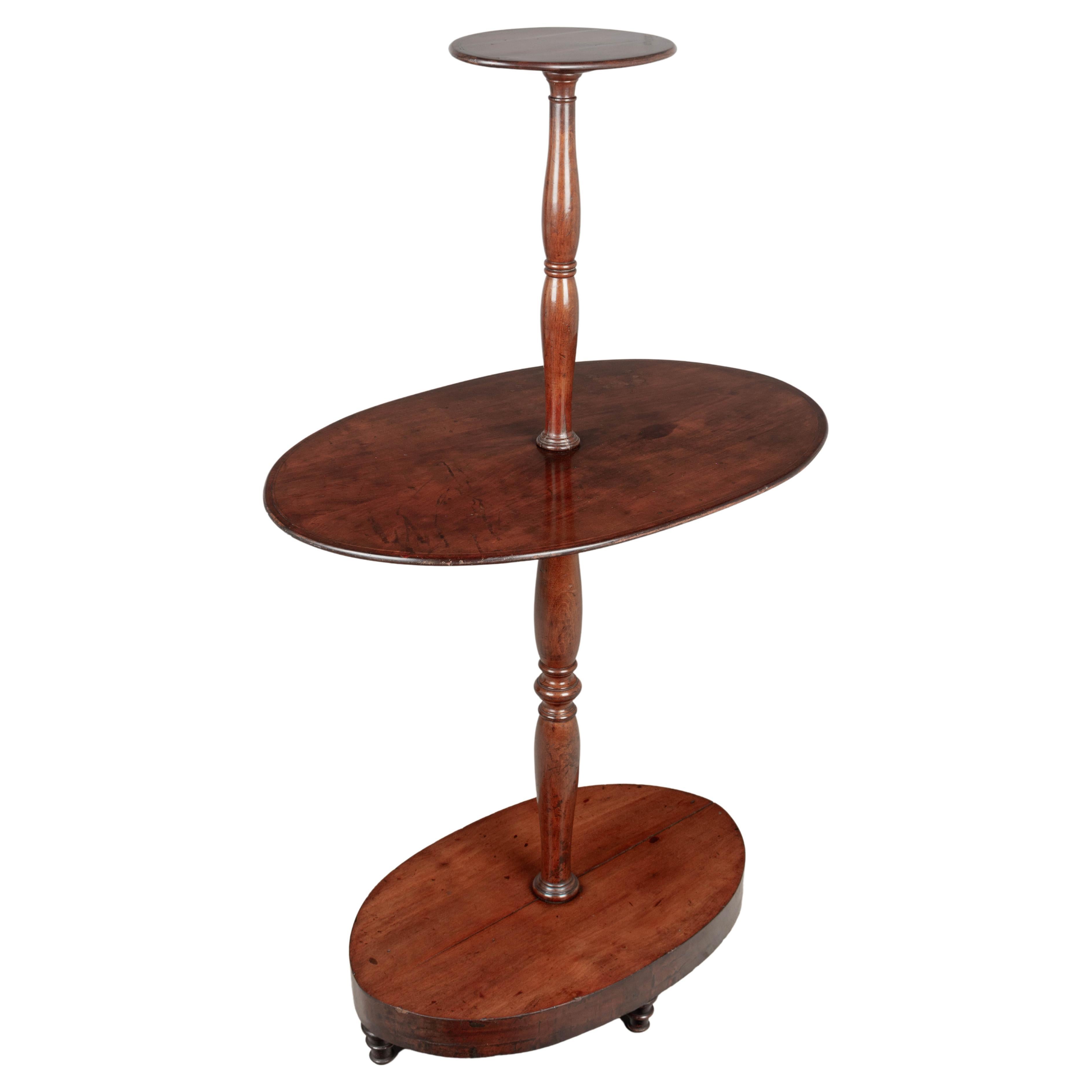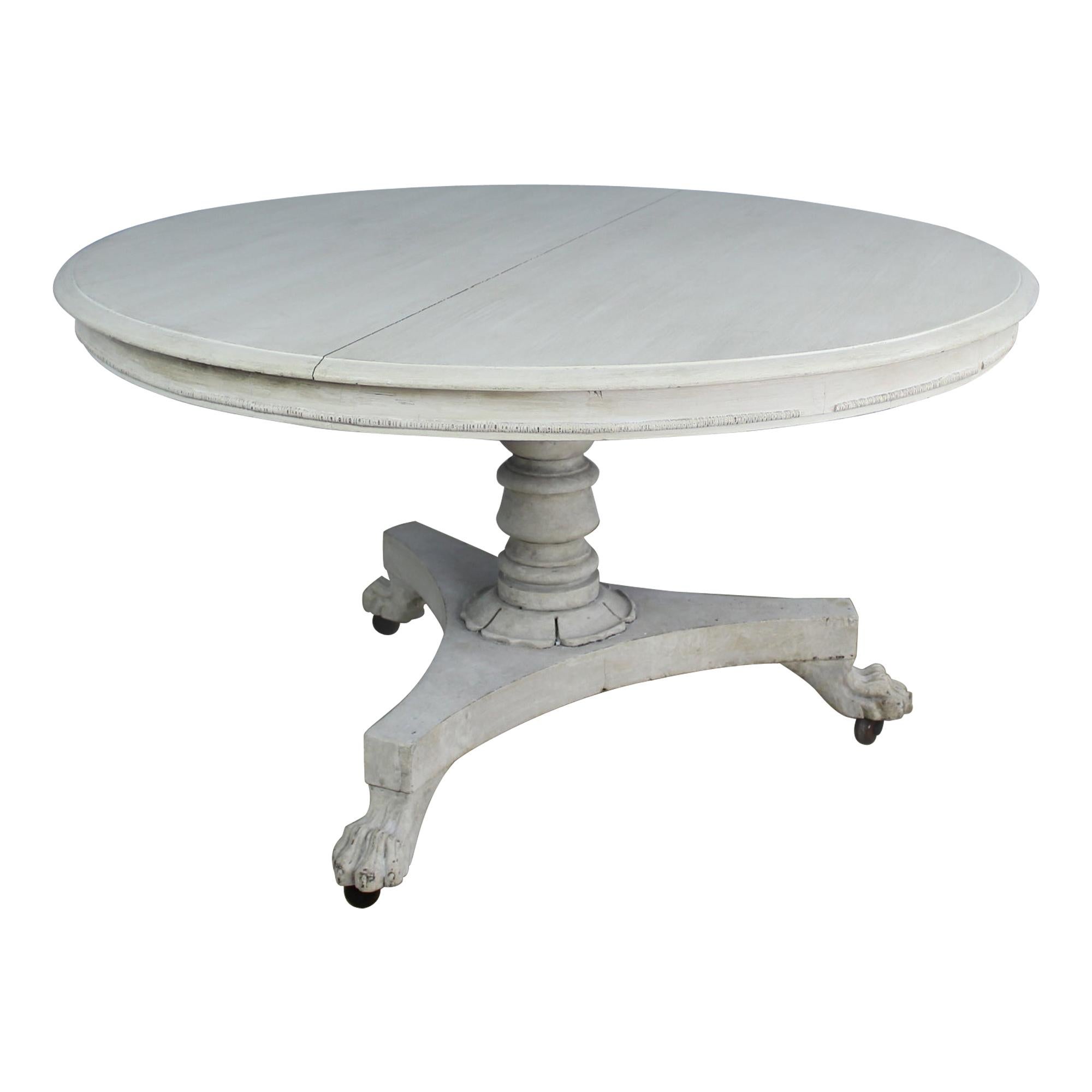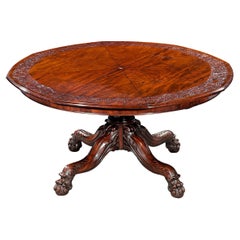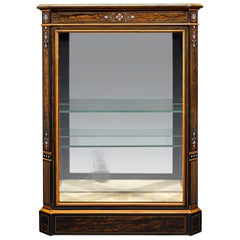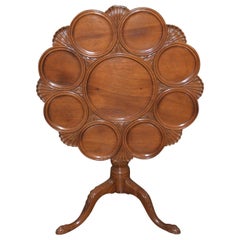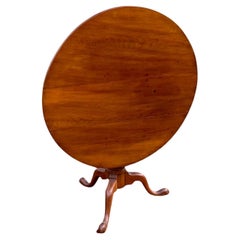
19th Century Veneer Sample Tilt-Top Table
View Similar Items
Want more images or videos?
Request additional images or videos from the seller
1 of 6
19th Century Veneer Sample Tilt-Top Table
About the Item
- Dimensions:Height: 30 in (76.2 cm)Diameter: 50 in (127 cm)
- Style:Victorian (Of the Period)
- Materials and Techniques:
- Place of Origin:
- Period:
- Date of Manufacture:circa 1850
- Condition:
- Seller Location:New Orleans, LA
- Reference Number:Seller: 30-64131stDibs: LU89117784223
About the Seller
5.0
Recognized Seller
These prestigious sellers are industry leaders and represent the highest echelon for item quality and design.
Established in 1912
1stDibs seller since 2010
92 sales on 1stDibs
Typical response time: 5 hours
More From This SellerView All
- Expanding Jupe Dining Table by Johnstone and JeanesBy Robert JupeLocated in New Orleans, LAThis exceptionally rare circular expanding dining table was designed by Robert Jupe and crafted by the English cabinetmakers Johnstone & Jeanes, successors to Johnstone, Jupe & Co. One of only a handful known from the firm, this table illustrates the Victorian era's quest to combine technical innovation with superb and beautiful craftsmanship. Complete with its original leaves, the table’s circular top is formed from eight separate segments. When the top is rotated, an ingenious swivel mechanism causes the sections to diverge, allowing a set of small or large leaves to be inserted for an adjustable increase in size. The design for the table was patented by Robert Jupe in 1835, who had envisioned “an improved expanding table so constructed that the sections composing its surface may be caused to diverge from a common center and that the spaces caused thereby may be filled up by inserting leaves or filling pieces.” The first of these fascinating tables were created between 1835 and 1840 during his partnership with John Johnstone and their firm of Johnstone, Jupe & Co. in London. Jupe left the company in 1840, after which the firm changed its name due to a new partnership and became Johnstone & Jeanes. The firm would eventually achieve international fame for its remarkable designs, exhibiting a "circular table made on the expanding principle" like this one at the Great Exhibition of 1851. Jupe was not alone in his fascination with combining the technical merits of engineering and mechanics with the more artful pursuit of cabinet making. The first half of the 19th century saw a prolific increase in the popularity of applying new ideas to furniture principles, which allowed furniture to serve many purposes. The resulting “patent” furniture...Category
Antique 19th Century English Victorian Dining Room Tables
MaterialsMahogany
- Regency-Era Card TableLocated in New Orleans, LAThis ingenious late Regency card table was designed with both beauty and entertainment in mind. When not in use, its folded D-shaped top sits against the wall providing an elegant si...Category
Antique Early 19th Century English Regency Game Tables
MaterialsWood
$8,850 - 19th Century Coromandel Inlaid VitrineLocated in New Orleans, LAHighly-prized coromandel, or East Indian ebony, was used to create this beautiful Victorian vitrine. Featuring delicate inlay in the Victorian/Edwardian style and glass panels framed in the equally luxurious satinwood, this cabinet is constructed to fit flush against a wall with baseboards. Elegant cabinets such as this are perfect for displaying one's treasures, but with original locks, keys, mirrors and fleur-de-lis fabric, this case is a prized possession unto itself, circa 1890. Measures: 30" wide x 14 ½" deep x 41 ½" high. Coromandel ebony is variegated brown and black, often called "streaky," wood. It is considered a highly valuable wood for turnery, fine cabinet...Category
Antique 19th Century English Victorian Vitrines
MaterialsGlass, Mirror, Ebony, Satinwood
- English Mahogany Writing Table, Early 19th CenturyLocated in New Orleans, LAThis exquisite writing desk is crafted of rich mahogany and features the straightforward design prevalent in England during the early 19th century. A luxurious leather-covered top pr...Category
Antique 19th Century English Regency Desks and Writing Tables
MaterialsBrass
- Russian Malachite and Pietre Dure PlinthsLocated in New Orleans, LAThe exquisite art of pietre dure is at its absolute finest in this spectacular pair of Russian ormolu and malachite plinths. True works of art of the Restauration period, these plinths each feature a matching pietre dure mosaic crafted of the finest stones, all chosen to create a sense of depth and dimensionality in the final work. Depicting an onyx vase with tulips, roses, daffodils, magnolia and other flowers, these pietre dure panels are among the finest examples of this ancient art we have seen. The pietre dure is complemented by malachite panels of the highest quality, exhibiting exceptional depth through its extraordinary cellular structure. Malachite is one of Russia’s most precious stones, and its presence in these plinths indicates commission and ownership by an individual of considerable status. Mounted in an excellent stepped ormolu base, these plinths originally served as bases for vases or candelabra. The overall execution and appearance of these plinths is very characteristic of the taste associated with the immensely wealthy collector Nicolas Demidoff. As early as 1806, Demidoff had commissioned the Parisian goldsmith Henri August to supply a guéridon; in 1819, he ordered famed French bronzier Pierre-Philippe Thomire to supply mounts for a massive malachite vase (now in the Metropolitan Museum of Art, New York), as well as a console table with legs in the form of Nike. Other commissions included a table given as a gift to Grand Duke Leopoldo II of Florence, now in the Pitti Palace. Demidoff eventually settled in Florence in 1822 and became Russian minister to the Tuscan Court. Elevated to the rank of Count of San Donato by the Grand Duke, he built a magnificent villa at San Donato on the site of lands formerly owned by the Medici. The villa was later inherited by Anatole, his son, Prince of San Donato, and there are records which confirm transactions he had with the Opificio delle Pietre Dure. The 19th century proved to be the golden age of Russian malachite. The stone became a sign of prestige and a token of wealth, so much so that Russian papers of the time wrote: "To afford having a big piece wrought in malachite is synonymous to owning diamonds." Year after year the Russian (Romanov) treasury paid increasingly unreasonable prices to hoard the best malachite, much of which went into Romanov palaces and extravagant objets d'art. The Hermitage Museum possesses a collection of over two hundred examples of this “palatial” malachite...Category
Antique 19th Century Russian Pedestals
MaterialsMalachite, Ormolu
$168,500 / set - French Ormolu PedestalLocated in New Orleans, LATremendous size and exquisite ormolu detailing distinguish this important 19th-century French pedestal. Crafted of ebony and ebonized woods, this outstanding fixture boasts intricate brass inlay and bold ormolu of exceptional quality on all four sides. Standing just over six feet tall and raised upon ormolu lion...Category
Antique 19th Century French Other Pedestals
MaterialsBronze, Ormolu
$98,500
You May Also Like
- 19th Century English Mahogany Tilt-Top Serving TableLocated in San Francisco, CA19th century English mahogany tilt-top serving table Fantastic tilt-top serving table made from solid mahogany. Hand carved and custom made. Sitting atop a hand carved pedestal ba...Category
Antique Mid-19th Century English Dessert Tables and Tilt-top Tables
MaterialsMahogany
- American, 18th Century, Birdcage Tilt Top Table Probably Philadelphia, Ca. 1780Located in Vero Beach, FLAmerican 18th century birdcage tilt top table probably Philadelphia ca. 1780. Very fine American mahogany tilt top table. The top is support...Category
Antique Early 18th Century American Federal Pedestals
MaterialsMahogany
- 19th Century Tilt-Top Breakfast TableLocated in High Point, NC19th century tilt-top breakfast table from England. The table is made from mahogany and has a wonderful rosewood band around the top over a central turned column and supported on fou...Category
Antique 19th Century English Victorian Dessert Tables and Tilt-top Tables
MaterialsMahogany
- 19th Century Rosewood Tilt-Top TableLocated in High Point, NC19th century tilt-top table from England, made from rosewood. The top is absolutely stunning! It has a shaped and beveled edge around the top, which surrounds a gloriously grained ...Category
Antique 19th Century English Victorian Dessert Tables and Tilt-top Tables
MaterialsRosewood
- 19th Century Rosewood Tilt-Top TableLocated in High Point, NC19th century rosewood tilt top table from England. The top is made from the most beautifully grained rosewood we have ever seen. The color is so vi...Category
Antique 19th Century English Victorian Dessert Tables and Tilt-top Tables
MaterialsRosewood
- Angelica Kauffman-Style Occasional Table, 19th CenturyLocated in Pasadena, CAThis is a charming early 19th century small tilt-top table. The top is painted in the style of Angelica Kauffman; the four-column pedestal bases is d...Category
Antique 19th Century European Regency Pedestals
MaterialsWood
$1,880 Sale Price20% Off
Recently Viewed
View AllMore Ways To Browse
Rosewood Tilt Top Table
Victorian Tilt Top Dining Table
Antique Tabletop Mirror
Victorian Rosewood Dining Tables
Brass Wall Medallion
Victorian Tilt Table Inlaid
Tilting Wall Mirror
Antique Mirror Samples
Round Tilt Top
Tilt Top Walnut Table
Tilt Top Round Tabler
Round Tilt Top Table
Wine Tasting Tables
Antique Dining Tilt Table
Tilt Up Tables
Tilt Table Wine
Antique Tilt Top Dining Tables
Wine Tilt Top

